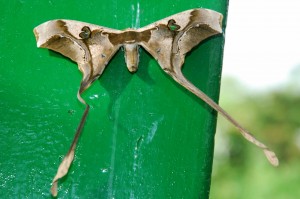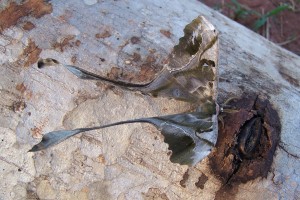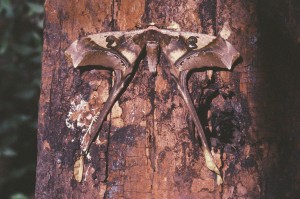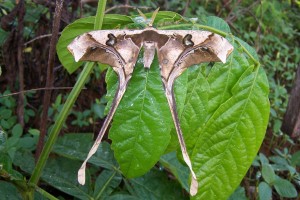Copiopteryx
| Copiopteryx sonthonnaxi E. André, 1905 | ||||
| a | a |
|
||
| . |
|
Copiopteryx virgo Zikán, 1929 |
||||
| a | a |
aa
The left photo was made in the departament of Concepción, February 1998, the right in Kanindeyu, November 2007. Note the almost identical torsion of the tail tips of the hind wing. In each of three occasions were observed only males, appearing at the lightsource after midnight. All three nights were foggy and rainy and the temperatures were well below average, with poor insect activity. This may be a coincidence, but the more frequent Copiopteryx sonthonnaxi often appears in nights with such extreme climate. That the moths prefer cold and humid climate for their flight activity seems unlikely. Rather, it can be assumed that the radial artificial light has little or no influence on their orientation, but probably the diffuse light in rain and fog. The dates between November and March point to two generations per year.
aa
The dates mentioned in Lemaire (1980) in Paraguay, Dep. San Pedro and Guaira, in Argentina, Prov. Salta, Jujui and Santa Fe and in Brasil, Mato Grosso are all in the border area of the Gran Chaco, so the newer observations in Paraguay in the north of Concepcion and in Kanindeyu. Further data in Bolivia in the Dep. Santa Cruz and Tarija (www.lepbarcoding.org) lie on the eastern edge of the Andes, in the transition to the western part of the Gran Chaco. Only the observation in the Dep. Pte. Hayes, Paraguay, is located in the center of the Chaco in the transition Humid Chaco – Dry Chaco.
aa
 |
a | the photo at the left sidewas taken in November 2010, Dep. Alto Paraguay, right margin of the Rio Paraguay. (test.: O. Rodriguez) | a | |
| foto: “Giovanni” |
a





